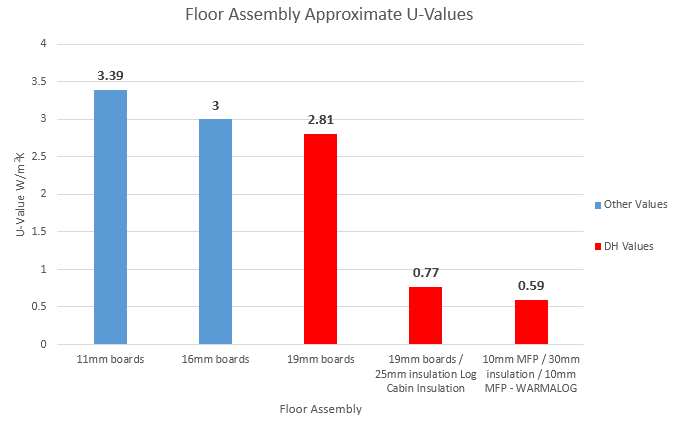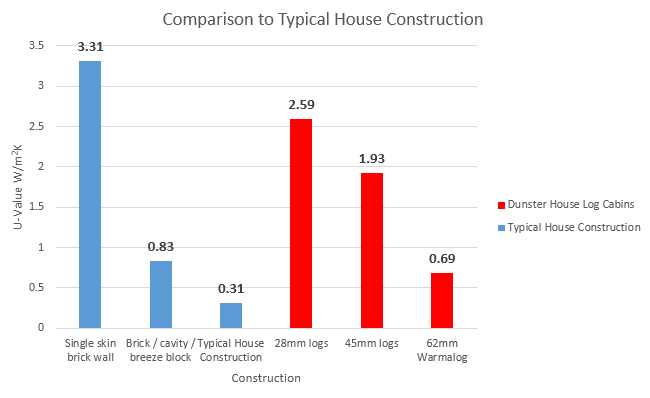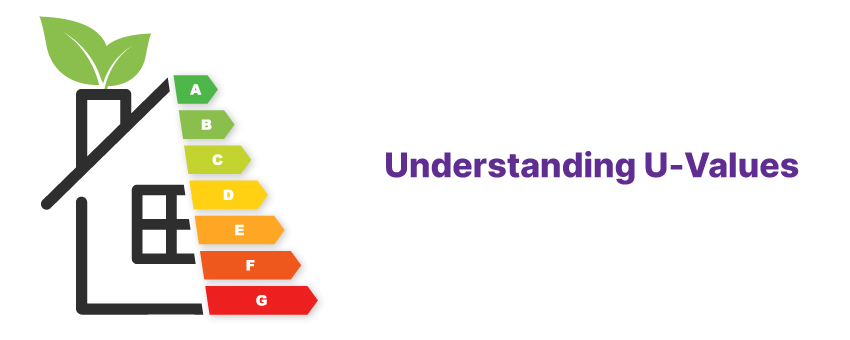What is a U-Value?
A U-Value is a measure of heat loss/gain found within building materials used for walls, floors and roofs. U-Values are always measured in W/m2K (Watts per Metres Squared Kelvin). Basically, the higher the U-Value of a material is, the worse it performs in relation to retaining heat. So materials with a lower U-Value have high levels of heat retention.
Why should you insulate?
Good insulation will help protect you from paying large heating bills. For this reason, you should always look at the U-Value of the materials used within the construction of a garden building. As the majority of a building’s heat is lost through the roof, walls and floor, insulating these areas is important.
Delivering quality, reliability and value with better insulation
We believe our excellent insulation provides you with a reliable garden building of superior quality at better value for money. Keeping your garden building insulated helps you to control its environment, which protects it from damage. This means you get a garden building which you can use all year round, that is built to last. What a fantastic investment!
All round Insulation
We have used our log cabins as a case study to help you understand U-Values a little bit more.
In the sections below, we have explained the significance of U-Value by comparing some of the options on our cabins for the walls/roof/floor, to other commonly available options, by the use of bar charts to hopefully give you a clear representation.
Walls
As a rule, timber isn’t as good an insulator as materials like polyisocyanurate, which are designed for insulation. For example, a log cabin with a 70mm wall has a U-Value of 1.41 W/m2K. But our best insulated walls, the 62mm Warmalog walls, have a significantly lower U-Value of just 0.69 W/m2K. The reason for this is that we fill the cavity of these walls with 30mm of polyisocyanurate insulation.
In fact, to get the same level of heat retention from solid timber, you would need to have walls which are a staggering 140mm thick! Not only would this be relatively impractical, the weight of the entire log cabin would be so high it would increase delivery times because we wouldn’t be able to manufacture them as quickly as we already do. It would also push the cost up considerably; and this is something we really don’t want to do. Therefore, it makes more economical sense to insulate your walls with a sensible insulating material.
Roof
Heat rises, so a poorly insulated roof will let out a lot of heat. Although U-Values for roofing are typically higher, the method of measurement is the same. Our roof insulation includes an 10mm MRP5/25mm Polyisocyanurate sandwich panels on top of our 19mm T&G (tongue and groove) roof boards. This offers excellent roof insulation, compared to standard roof boards, and a U-value of 0.65 W/m2K.

Floors
When it comes to insulating a building, the floor is all too often forgotten. On our 28mm and 45mm wall log cabins, we offer a floor insulation option which is 25mm foil backed PUR insulation. On our 62mm Warmalog Cabins, they come with insulation in the floors as standard which is a sandwich structure 10mm MRP5 / 30mm PIR insulation / 10mm MRP5. The insulated floors give you a U-Value of 0.77 W/m2K. or 0.59 W/m2K. respectively, depending on which cabin you have.

House Construction Comparison
Some of you might be thinking “how does the U-Value in the timber used by Dunster House compare to the brickwork of my home?” Well, as you can see our 62mm Warmalog Cabin, with a U-Value of 0.69 W/m2K is comparable to a house construction of brick / cavity / breezeblock. It may not be as good as the Typical House Construction, which is at 0.31 W/m2K, but even our 28mm wall logs are much better than a single skin brick wall.
Typical House Construction – 102mm Brick Wall / 50mm Air Cavity / 100mm AAC Blocks / Mineral Wool / 12mm Plasterboard






